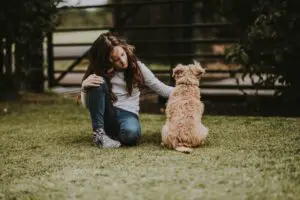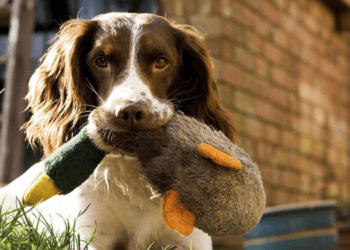If your dog doesn’t seem to be getting the hang of his training, don’t be too quick to blame the dog. You and other members of the family play an important role in how well your dog learns.
Table of Contents
Training a Full Time Event
First of all, training must not be limited to one half-hour class a week. You need to practice daily. Several short sessions a day work better than one long one.
You can use every opportunity during the day to teach your dog. Anytime you are going to offer a reward, be it a treat, a meal or just a pat on the head, ask your dog to “earn” it first. Give a simple command, such as “sit” or “down” before feeding, petting, playing, etc.
Consistency a MUST
Second, you must be consistent. Always use the same verbal command for the behavior you want. Short, one word cues are best – sit, not sit down, come, not come here, etc.
Use each word for only one behavior, for example don’t use “down” to mean lie down, get off the couch, and don’t jump. Choose different cues for each behavior.
Make sure everyone in the family is on the same page where training is concerned. If you are trying to break your dog of jumping up, and your teenage son thinks it great fun for the dog to jump on him, you will never break the dog of the habit. He may learn not to jump on you, but that won’t stop him from jumping up on company.
Define Your Goals
Be consistent in your expectations as well. You can’t decide to allow the dog on the couch on Saturday nights, but no other time. It can’t be OK to pull on the leash if you are walking around the block, but not OK at the dog park.
If you are going to obedience classes, involve all the members of your family. Though there is usually one person who will be in charge of most of the training, it is important that everyone learn to train.
Dog trainer Pat Miller (author of the excellent book The Power of Positive Dog Training), believes that kids can be even better trainers than adults. Some of her reasons are: kids have higher pitched voices and speak with more animation. Dogs react to this.
Kids also seem to be more aware of the dog’s body language. Children are less intimidating to the dog, simply because of their size.
You may also like to read:
Does My Dog Really NEED Training!!,
Crate Training Puppies – Tips and Advice
Keep Positive
Attitude is important as well. If you believe your dog will do well, then he will. If you go about it as a chore you have to go through, neither you nor your dog will enjoy your training time, and the dog won’t learn much.
Try to make if fun for both of you. Don’t start a session if you are tired or cranky. Always end the session with a success. If the dog is having trouble with the behavior you are working on, finish by going back to something he already knows.
It’s Not Always Easy
Keep in mind that your dog is learning a new language. Think how hard it would be for you to learn French!
Be realistic with your expectations and go slow. If the dog is having trouble with a command, break it down into easier behaviors, and reward for partial success at first.
Remember that the rewards of training are many, and it will all be worth it in the end. Also, training never really does end. It is good mental exercise for the dog to keep learning, and they usually enjoy it.
There is no end to the things a dog can learn to do.
If you are a dog lover then, Subscribe to our weekly newsletters. No Spams!








